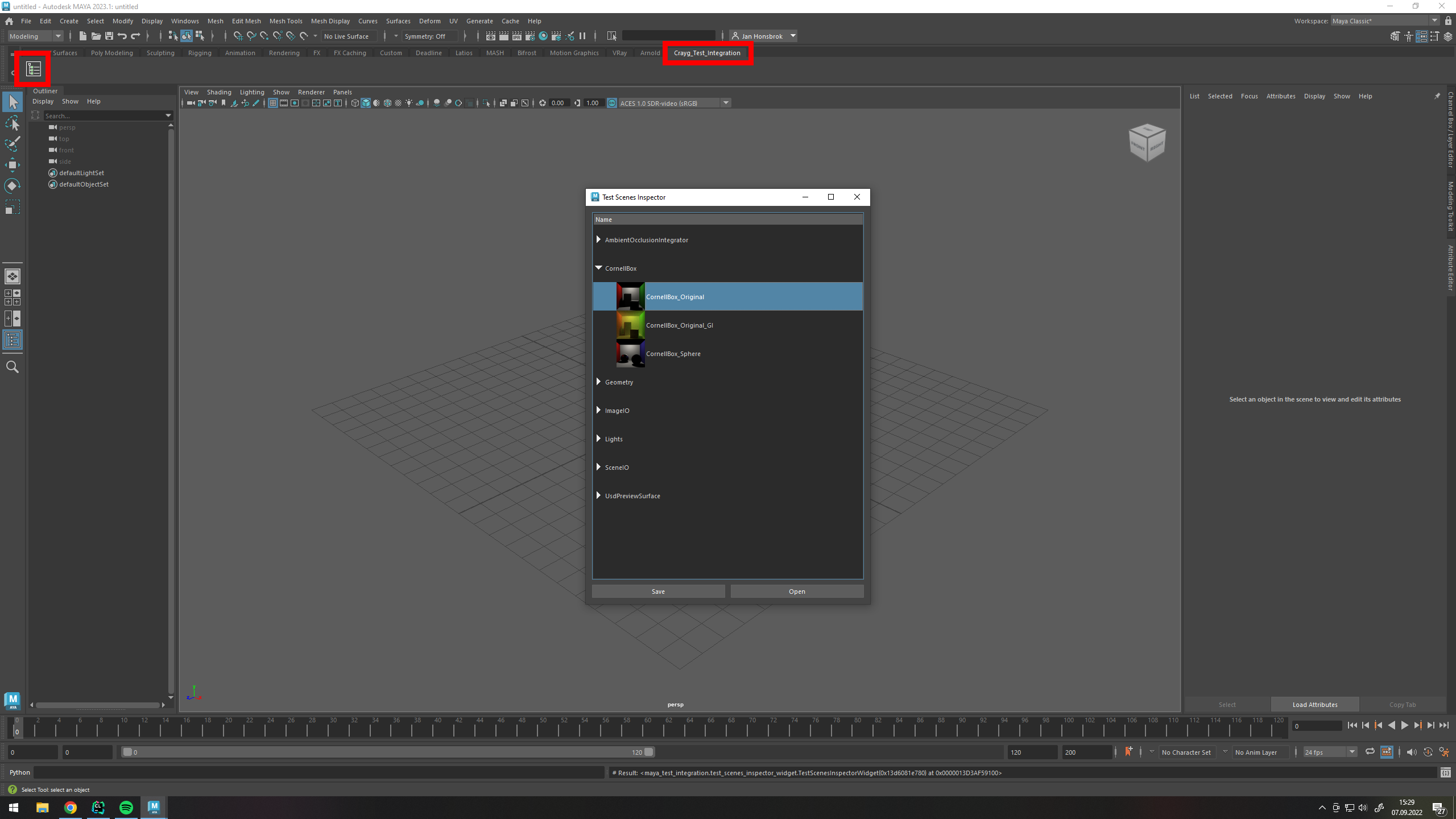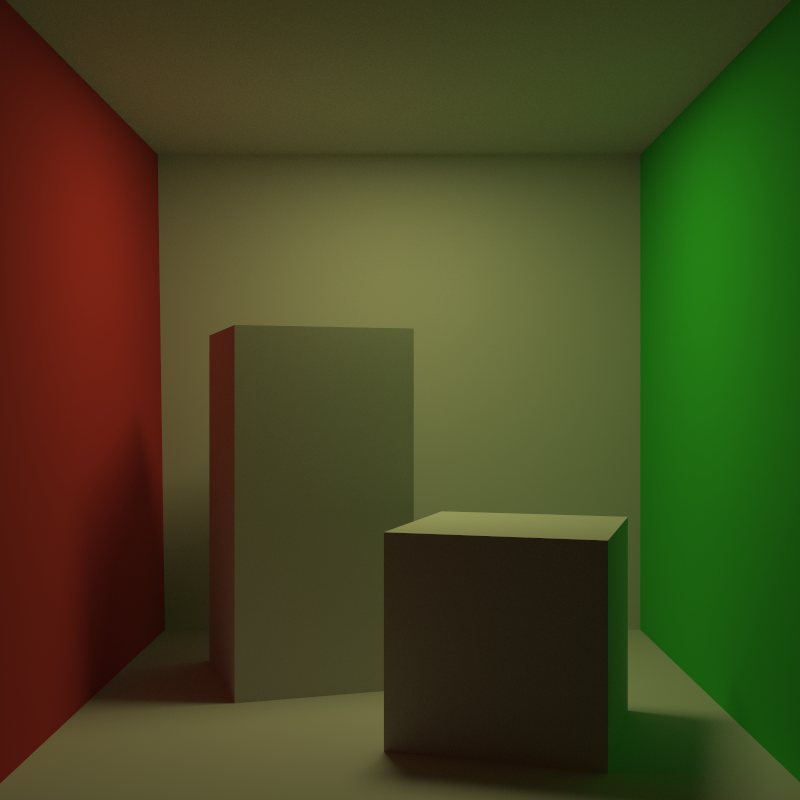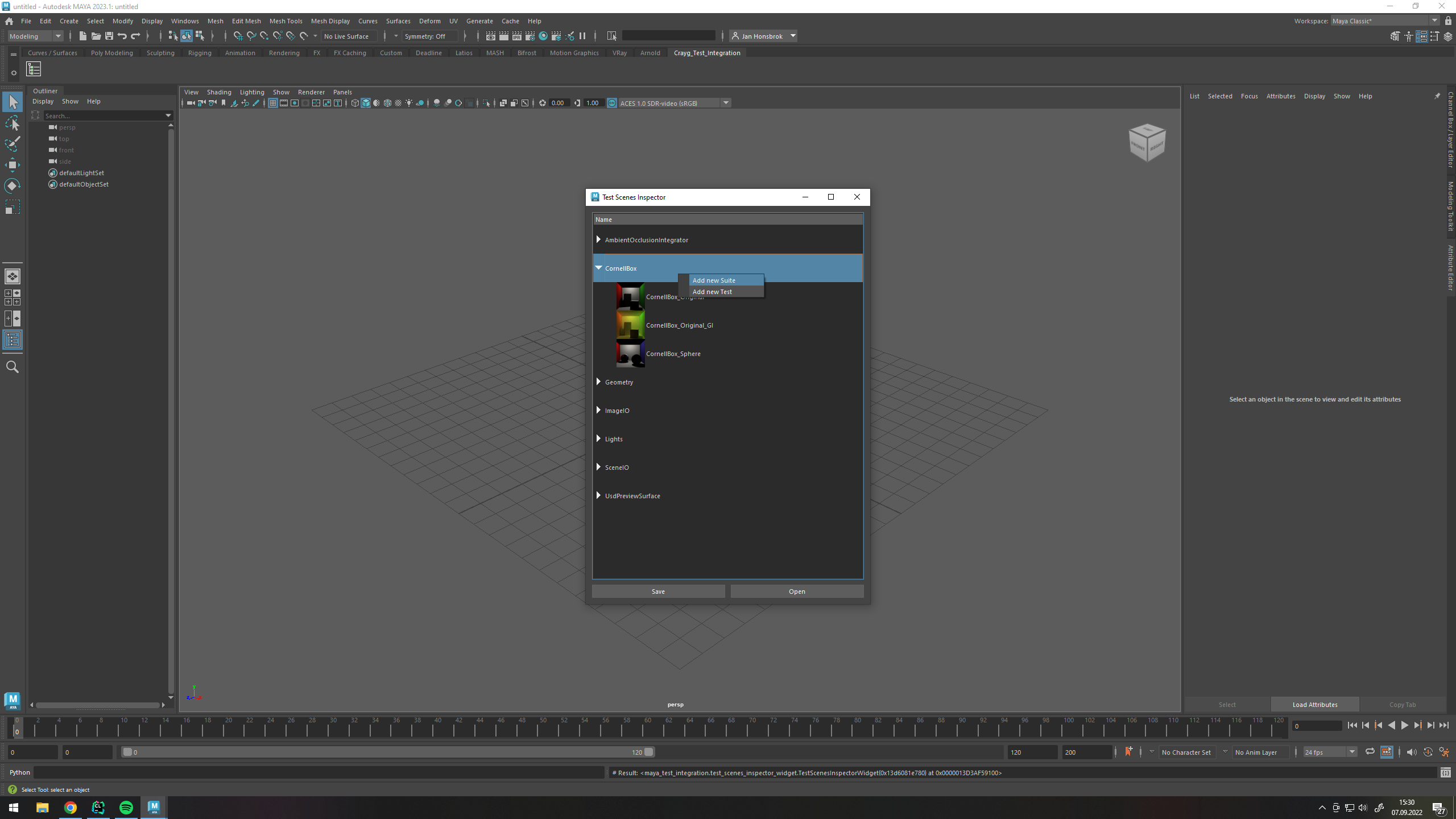Personal Raytracer project started to get familiar with C++ in general and how to do CI and TDD in C++.
Cornell Box by http://casual-effects.com/data/index.html
- Sphere / Trianglemesh intersection
- PointInstancer (Single-Level Instancing)
- Area lights (Rect and Disk)
- perfect reflections
- diffuse reflections / GI
- Intel Embree based BVH
- Adaptive sampling inspired by Dreamwork's Implementation of the paper by Dammertz et al.
- multiple integrators:
- Raytracing
- Ambient Occlusion
- Debug (Simple "N Dot V shading", inspired by Renderman's PxrVisualizer))
- Basic support for Subdivision Surfaces using OpenSubdiv
- Scene format uses USD, with basic respect for UsdRender
- CLI interface
- Qt based Renderview GUI
- Unittests
- Integrationtests using Cato
- Continuous Integration using Github Actions
- support for Windows, Linux and Mac OS
- fully automated CMake build
- Support for CMake Unity builds
- Dependency Management using Conan
- Conan Recipes for OpenSubdiv (available in Conan Center) and USD (to be contributed to Conan Center)
- Autodesk Maya GUI integration for easy authoring of integration test scenes (more details)
- Conan Package Manager, get it here
- CMake
- A C++ 17 compiler
- (access to my custom USD Conan recipe)
The invocation of Conan is handled transparently by CMake
For better buid speed, it is recommended to do a CMake unity build by
specifying -DCMAKE_UNITY_BUILD=true -DCMAKE_UNITY_BUILD_BATCH_SIZE=16
mkdir build
cd build
cmake -DCMAKE_BUILD_TYPE=Release -DCMAKE_UNITY_BUILD=true -DCMAKE_UNITY_BUILD_BATCH_SIZE=16 ..
make -j 4mkdir build
cd build
cmake -G "Visual Studio 16 2019" -DCMAKE_BUILD_TYPE=Release -DCMAKE_UNITY_BUILD=true -DCMAKE_UNITY_BUILD_BATCH_SIZE=16 ..
cmake --build . --config Release -- /M:%NUMBER_OF_PROCESSORS%Alternatively, you can also use Ninja:
mkdir build
cd build
call "C:\Program Files (x86)\Microsoft Visual Studio\2019\Community\VC\Auxiliary\Build\vcvarsall.bat" x64
cmake -G "Ninja" .. -DCMAKE_BUILD_TYPE=Release
ninjacd build
ctest -V# you may want to use a virtualenv
pip install -r requirements-dev.txt
pre-commit install
git config blame.ignoreRevsFile .git-blame-ignore-revsQt / Python based tool for easy authoring of integration test scenes inside of Autodesk Maya
For each test, a Maya .ma file and a .usda file is stored
Currently, Autodesk Maya 2023 is supported. You need to have the maya-usd installed
Make sure to install the Python dependencies inside Maya:
C:\Program Files\Autodesk\Maya2023\bin\mayapy -m requirements.txtStart Maya with the test integration via command line:
cd src\mayaTestIntegration
start_maya.batWhen Maya is open, a new Shelf is added. Use the Inspector Icon to launch the test integration:

The Test Integration will present you the suites / tests as a tree view

Opens the .ma file associated with the test
Saves the currently open test as a .ma file and exports scene to .usda
Suite: right-click into tree view Test: right-click on a suite

